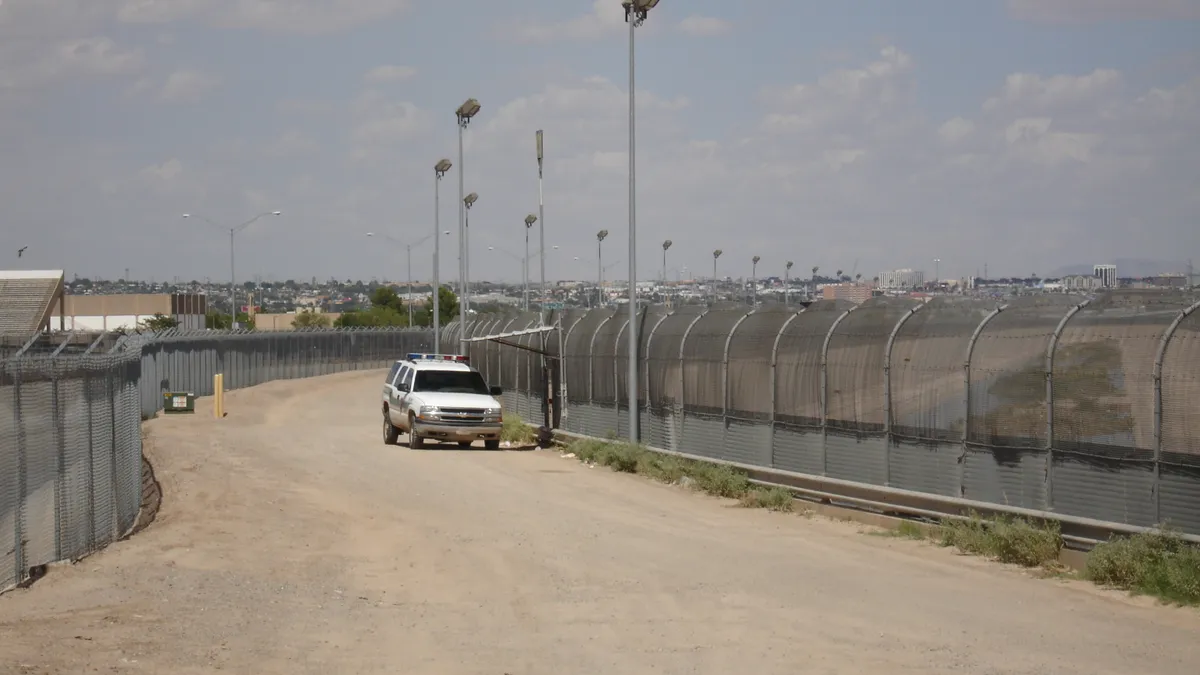To see how this announcement fits into the timeline of border wall construction, click here.
Dive Brief:
- The Pentagon transferred $1 billion to the U.S. Army Corps of Engineers (USACE) Wednesday to support construction of 57 miles of 18-foot pedestrian fencing as well as road and lighting improvements along the U.S.-Mexico border in the Yuma, Arizona, and El Paso, Texas, regions, according to a U.S. Department of Defense (DOD) release.
- The funds are made available under President Trump’s Feb. 15 national emergency declaration, which seeks roughly $8 billion total for barrier construction. The White House plans to tap into $6.1 billion of defense funds, including $2.5 billion from counter-drug programs and $3.6 billion from military construction funds.
- This first transfer comes from DOD’s counter-drug budget and will be used to address “up to 11 drug-smuggling corridors along the border,” according to a statement from acting Defense Secretary Patrick Shanahan, The Hill reported.
Dive Insight:
The emergency declaration allows the Pentagon to redirect funds from its accounts to the wall without congressional approval, but this week’s transfer saw strong pushback from Democrats in the U.S. House of Representatives, who could draft laws to prevent any similar moves in the future, some reports have suggested.
That doesn’t seem to be slowing down the construction plans for 11 miles of fencing in Yuma and 46 miles in El Paso. USACE is already on site in both locations conducting an informal survey of the sites, CNN reported Thursday. Contracts are expected to be awarded in mid-April, and if DHS expedites approvals by issuing environmental waivers, construction could start as soon as late May, according to the report.
DHS did so for two Texas wall projects in Oct. of 2018 — new construction in Hidalgo County to patch gaps left in 2008, and automation of border gates in Cameron County. The agency “remains committed to environmental stewardship” and keeping impacts to a minimum, according to the announcement.
While individual projects may see accelerated timelines, Trump’s overall border vision has been very slow in coming to fruition amid pushback, and has had to become leaner in its ambition along the way. SLS broke ground on the most recent stretch in February — a $101 million replacement of 14-miles of barrier in San Diego with a 30-foot steel bollard design. New construction, as opposed to replacement of existing infrastructure, has been few and far between. SLS received the first such contract, breaking ground on 6 miles of levee wall along the Rio Grande River in Nov. of 2018.











